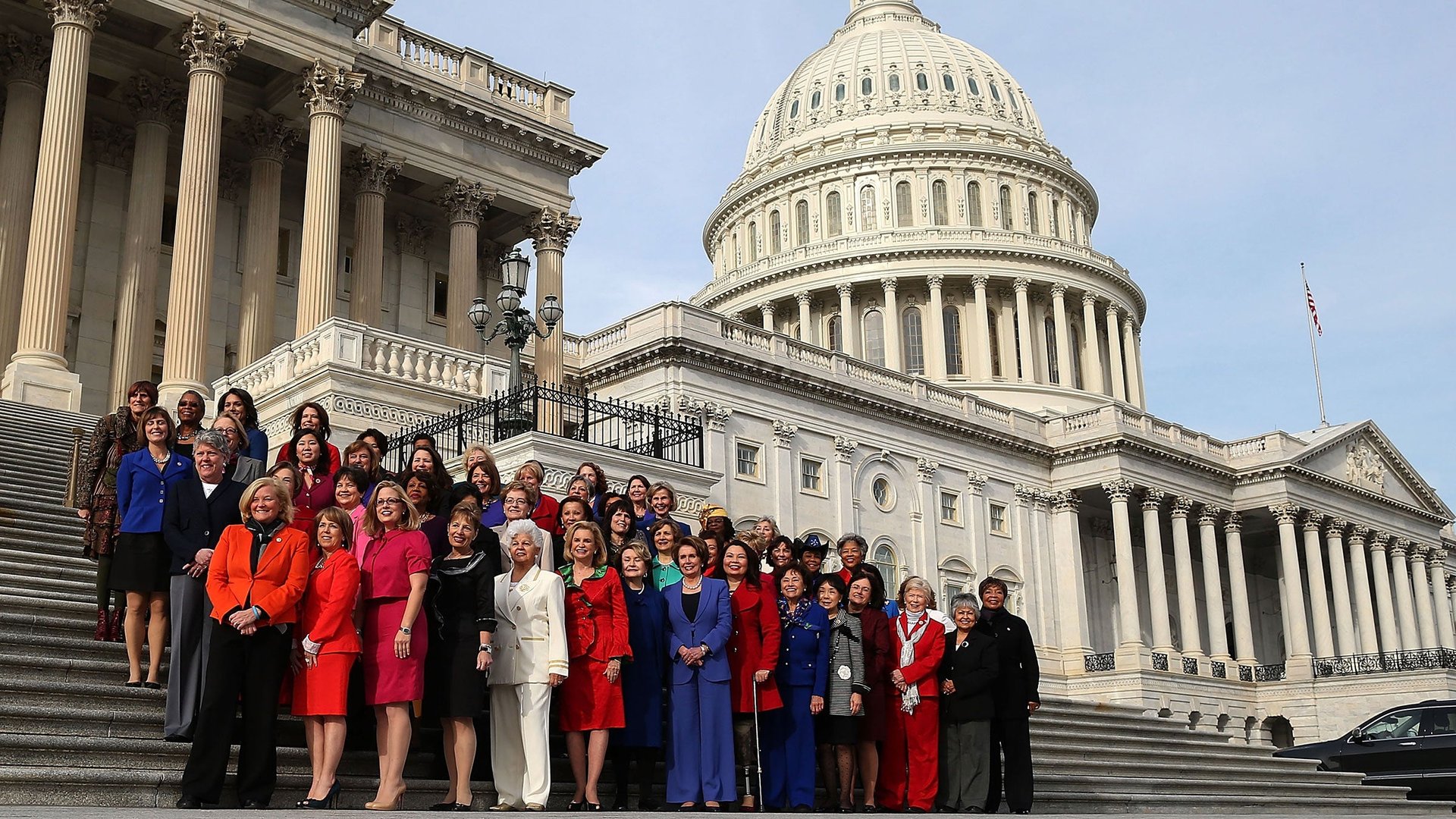Women’s political donations are rising fast, but men are still way out-donating them
For most of American history, political money—that is, the heavy-hitting capital that funds candidates, shapes policy, and generally directs political life—has come from men’s pockets. Women haven’t had much money of their own to donate. It’s not just that women’s incomes lag behind men’s, but also that men tend to control household income—including its use for political purposes.


For most of American history, political money—that is, the heavy-hitting capital that funds candidates, shapes policy, and generally directs political life—has come from men’s pockets. Women haven’t had much money of their own to donate. It’s not just that women’s incomes lag behind men’s, but also that men tend to control household income—including its use for political purposes.
That has been slow to change, even as women’s incomes and spending power have increased. In 2016, the top 100 individual donors contributed $401 million to US political campaigns and superPACs. Only 14.4% of that money comes from women, according to the Center for Responsive Politics. The top 10 male donors (also the top 10 donors, period) have contributed a combined $155.4 million. Compare that to the top 100 female donors, who have contributed a combined $96.8 million.
But there are some signs that the pace of change is picking up—with wide-reaching implications for US politics. In the 2016 election, the Washington Post reports that the top 150 donors to super PACS include 37 women, up from 31 in 2012. And it’s not just the wealthy, one-percenter women who are joining the donor class. Women from across the socio-economic spectrum are forking over money to make themselves heard. A majority of Hillary Clinton’s donors for her 2016 presidential campaign were women, she has said.
We generally think of women’s participation in politics as a matter of representation (electing more female leaders) and of voice (women calling for their interests to be heard). But money is still one of the most powerful forms of influence in politics, as concerns about campaign finance and corruption make clear. What happens when women start to wield it?
One of the most conspicuous indications of this power is that women are increasingly using their financial influence to change male-to-female ratios in politics. “Only a few members of Congress receive more than half of their donations from women,” the New York Times reports. Those who do are all women and Democrats. Female political donors span the ideological spectrum, but on the whole their donations follow this trend. In the past five election cycles, the top 100 male donors never gave more to Democrats than Republicans. But the top female donors did—60% of the time. Women across the board are more likely than men to identify as Democrats, according to Pew Research. It’s no secret that they helped put Obama in office and are trying to do the same for Clinton. (Women support Clinton to Trump 59% to 35%.) It’s a problem the GOP has failed, miserably, to address. But women’s support for Democrats isn’t just bolstering the party; it’s also remaking it: Democratic politics includes far more female lawmakers than the GOP.
This support of female candidates helps women make sure their interests aren’t overlooked. Research shows that women in Congress support legislation on so-called women’s issues, like health, family, labor, and civil rights, at a greater rate than their male colleagues.
Traditionally, female politicians have struggled to raise funds—especially enough to take on their male adversaries. A growing female donor class is developing networks for candidates to tap into, much as men have long relied on established business and political networks.
What does this mean for future political campaigns? They’ll need to take women, and their spending power, more seriously. Campaigns are used to asking men, not women, for high-dollar donations. In 2012, Women for Romney was the first organized effort to raise top-tier funds from women for a Republican presidential candidate. It brought in $23 million, out of the total $1 billion raised for Romney’s campaign. As Lisa Spies, a leading fundraiser for the group, has explained, there’s no special strategy for targeting female donors: They just need to be asked.
But the fact remains that men still own the bulk of America’s economic power. Only 4.6% of S&P 500 CEOs are women, and women occupy only 19.9% of board seats. Analysts worry that women’s progress has plateaued. Though the income gap has been closing, the overall wealth gap between men and women has actually widened since 1998. According to Mariko Chang, author of “Shortchanged: Why Women Have Less Wealth and What Can Be Done About It,” women own only 36% as much wealth as men. “The gender revolution has stalled,” she says, “and the ways it has stalled are reflected in the wealth gap.” As long as this is the case, women’s political influence simply cannot match men’s.
Supreme Court decisions like McCutcheon v. FEC and Citizens United v. FEC haven’t helped. They raised the bar for donations, allowing much higher levels of giving. Predictably, male donors flooded the system with the biggest contributions, and women have struggled to keep pace with their funds. The Center for Responsive Politics suggests that these rulings may explain why the number of female megadonors has remained basically flat for the last 25 years. In 1990, 21 of the top 100 donors were women. In 2012, it dropped to 11, then shot back to 22 in 2014. But today, only 19 make the top 100 list—and none have made the top 10 list in the last two election cycles.
Campaign finance reform could help level the playing field: Since corporate leadership is predominantly male, the corporatization of political money invariably favors men. But women will also need to fight for ways to jumpstart their slowing advance toward full economic equality. Right now, their political impact per dollar is just a fraction of what it could be.